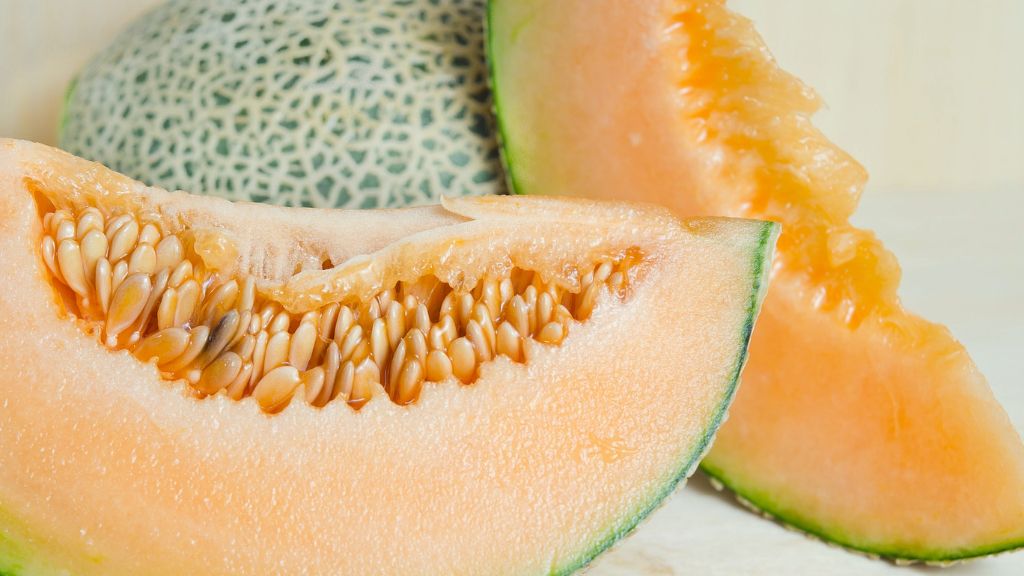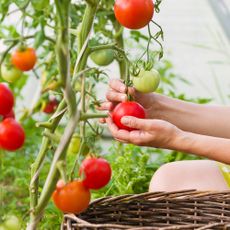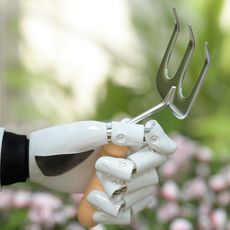Growing Hale's Best Melons

There is not much in this world more rapturous than biting into a cold slice of juicy melon, and cantaloupe happens to be one of my favorites. If you love cantaloupe too and are looking for a winning variety, the old timer Hale's Best Muskmelon plant should be your choice. So, what makes the fruit from Hale's Best Muskmelon plants so exceptional?
History of Hale's Best Cantaloupe
Melons have a long, somewhat befuddled, history. The actual origin of the melon is up for debate. Depending upon who you ask, the fruit was first eaten in Persia, or Afghanistan, or Armenia. We do know that cantaloupes (Cucumis melo var. cantalupensis) were cultivated in ancient Egypt and in Iran and India dating back to biblical times, or around 2,400 BCE. Melons are referenced in the Bible by the Hebrews wandering the desert with Moses reminiscing on foods they missed during their exile. Maybe they were thirsty and dreaming of the quenching sweet juices of the 90% water content of the cantaloupe. Hale's Best cantaloupe is a classic favorite dating back to the 1920s. It was introduced into the market by I.D. Hale, hence the name, who discovered this varietal in Imperial County near Brawley, CA under development by a Japanese grower. This cantaloupe, or muskmelon, has heavily netted skin with thick walls and a small seed cavity, allowing for more of its mouth-watering, sweet fruit. It is more tolerant of drought than other cantaloupes and can be grown in a wider variety of climates. Like all melons, Hale's Best needs 2-3 months of summer heat, so growing Hale's Best melons may be a bit more of a challenge in the North, but not impossible.
Growing Hale's Best Melons
Melons are sun worshippers, so do not plant them outside until the soil temps is at least 70-80 degrees F. (21-26 C.). Start them inside about 2-4 weeks prior to that time. Sow several seeds ½ inch deep in peat pots and keep them at a constant 75 degrees F. (23 C.) while germinating. Thin to one strong plant per pot; cut the others out, don't pull them out. Harden the plants gradually by placing them outside for increasing numbers of hours each successive day so they are nice and strong when you transplant them. Transplant the seedlings in compost amended hills 4-6 inches apart with 2-3 plants per hill, and of course, in full sun. In cooler climates, place black plastic or landscape fabric down to warm the soil. Consistent watering at onset is crucial for plump, juicy melon production; remember, they are over 90% water! Reduce watering once fruit is set. Pinch off smaller fruits after midsummer so the plant can send all its energy to the larger fruit. Oh, and if you are short on space, these babies can be grown on trellises. Vines produce both male and female blooms, with the males appearing weeks before the female, so it may take a bit to see fruit set. It all depends on the birds and the bees, especially the bees that are integral to pollinating the blooms. How do you know when to harvest the cantaloupe? After around 85 days, the melon will become more golden in color and the blossom end will have some give with an aromatic aroma. Melons will heft at around 3 pounds and a crack will form on the stem right near the attachment point. This is called the "slip stage" and allows the melon to detach from the vine. This should be very easy, requiring no effort. If you have too torque on it, the melon isn't ready. Melons can be removed from the vine and allowed to ripen further; that's how commercial growers do it. This puts the sweetness of the melon at risk, though, as it is the last bit of natural vine ripening that allows the melon to sweeten. It's up to you, but I think you should pack your patience. It's worth the wait. Just think of that sugary juice dripping down your chin"¦if they last that long! Hale's Best will keep in a cool place for several weeks.
Gardening tips, videos, info and more delivered right to your inbox!
Sign up for the Gardening Know How newsletter today and receive a free copy of our e-book "How to Grow Delicious Tomatoes".

Amy Grant has been gardening for 30 years and writing for 15. A professional chef and caterer, Amy's area of expertise is culinary gardening.
-
 Best Indeterminate Tomatoes: Flavor-Packed Varieties For Fresh Harvests All Summer Long
Best Indeterminate Tomatoes: Flavor-Packed Varieties For Fresh Harvests All Summer LongIndeterminate tomatoes are vining varieties that fruit all season. Discover their distinctive features and how to choose the best type to grow in your garden.
By Bonnie L. Grant
-
 The Dangers Of AI For Gardening – How To Know What’s Real When It Comes To Your Garden
The Dangers Of AI For Gardening – How To Know What’s Real When It Comes To Your GardenThings aren’t always what they seem when it comes to using AI for gardening. Be discerning when relying on AI for accuracy, and take the time to do research.
By Teo Spengler
